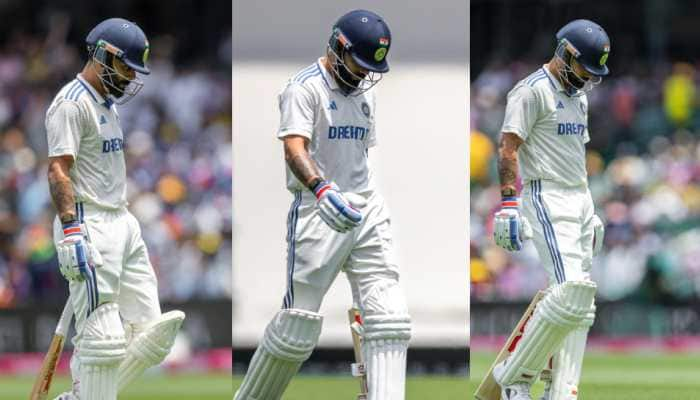Mark the date – Watch this year's only breathtaking 'ring of fire' solar eclipse on February 26
The eclipse - during which the Sun will all but disappear as the Moon crosses its path --will be most visible in a 100-kilometre (62-mile) band cutting through Chile, Argentina, Angola, Zambia and the Democratic Republic of Congo.
Trending Photos
) Image credit: NASA
Image credit: NASA New Delhi: Sky gazers will be treated to a rare, yet breathtaking annular solar eclipse this Sunday, February 26, 2017, perhaps, if you're in the right location.
The annular solar eclipse, also known as 'ring of fire' eclipse, does not occur all too often, but when it happens it surely captivates the hearts of those who look up at the night sky.
Where, when can you see the annular solar eclipse?
People in parts of South America and Africa will be lucky enough to witness the spectacular eclipse.
The eclipse - during which the Sun will all but disappear as the Moon crosses its path --will be most visible in a 100-kilometre (62-mile) band cutting through Chile, Argentina, Angola, Zambia and the Democratic Republic of Congo.
The eclipse, starting in the southeast Pacific Ocean at sunrise, will hit solid land at 12:21 GMT in southern Chile, near the town of Coyhaique, then cut through Argentina - near Camarones Bay on the eastern coast - before hitting the South Atlantic.
It will reach Angola south of the town of Benguela around 15:15 GMT, then move to Zambia and DR Congo just before the Sun sets and the light show ends.
According to NASA, an annular eclipse occurs when the moon, slightly more distant from Earth than on average, moves directly between Earth and the sun, thus appearing slightly smaller to observers' eyes; the effect is a bright ring, or annulus of sunlight, around the silhouette of the moon.
It will take about two hours for the Moon to move across the face of the Sun, but the "ring of fire" peak will last a mere minute.
At sea, the eclipse peak will last 44 seconds and "only be visible to any ships that happen to be in the right place at the right time," said Terry Moseley of the Irish Astronomical Association.
At the height of the eclipse the Moon will be right in the middle of the Sun, leaving "a perfect, beautiful, symmetrical ring" of light around the edge before exiting on the other side, said Moseley.
However, Moseley warned that viewers should not observe the eclipse unfold with the naked eye.
Safest way to watch 'ring of fire' eclipse safely
According to the Astronomical Society of Southern Africa (ASSA), the eclipse can be safely observed using a basic pinhole projector.
Punch a tiny hole in a piece of paper with a sharp pencil, hold it into the Sun, and project the image onto a second sheet.
The gaps between tree leaves make for a similar effect on the ground, says the ASSA website, calling this "the coolest and safest way to watch a solar eclipse".
To look at the Sun directly, one would need special glasses.
Because good weather is the key to successful eclipse viewing, NASA's eclipse website recommends watching the weather forecast a day or two before the eclipse, and picking somewhere with a cloud-free prediction.
(With AFP inputs)
Stay informed on all the latest news, real-time breaking news updates, and follow all the important headlines in india news and world News on Zee News.
Live Tv







)
)
)
)
)
)
)
)
)
)
